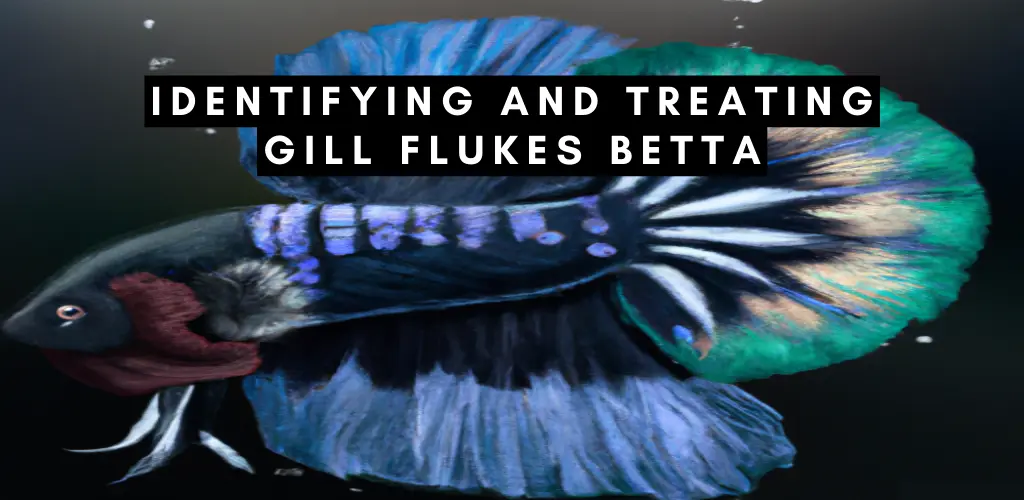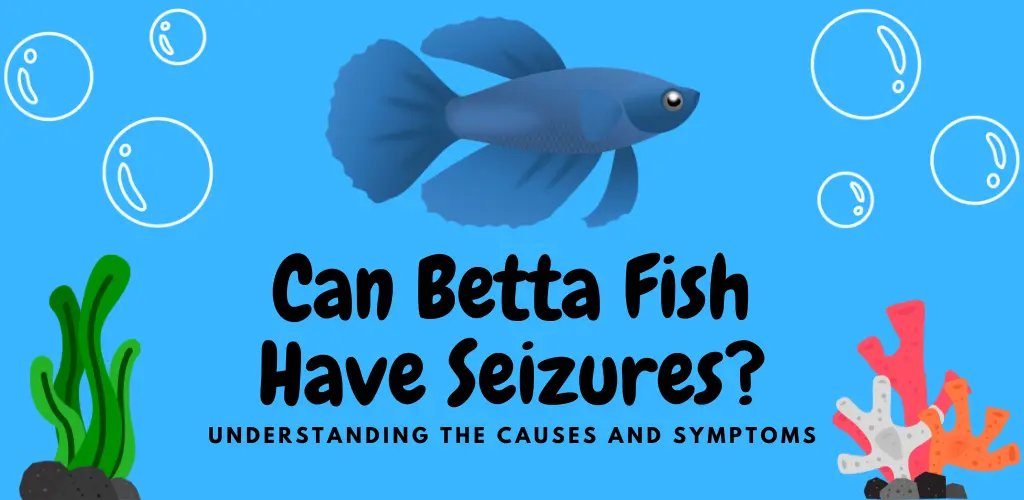Gill flukes are parasitic flatworms that can infect fish’s gills, including Betta fish. The gills are essential for a fish’s respiration, making them particularly vulnerable to the harmful effects of gill flukes. This article provides a comprehensive overview of gill flukes Betta fish, including their symptoms, causes, diagnosis, treatment, and prevention.
Table of Contents
What Do Gill Flukes Look Like on a Fish?

Gill flukes are parasitic flatworms that can harm fish in aquariums. To effectively treat them, it is vital to identify the symptoms and signs of infection. Gill flukes are small and triangular and are typically between 1-2mm in length. They are opaque or white, and you can see them with the naked eye. The presence of gill flukes can cause fish to display symptoms such as heavy breathing, coughing, or shaking of the head.
The gills may also appear reddened, swollen, or irritated, and the fish may lose its appetite or become listless. It is advisable to examine your fish regularly and observe any signs of infection to detect gill flukes. A magnifying glass may be necessary to identify the parasites to get a clear view of the gills, where the gill flukes are most likely to be found.
What Are The Symptoms Of Gill Flukes?

Gill flukes, also known as parasitic flatworms, can cause many symptoms in Betta fish. Be aware of these symptoms to seek prompt and effective treatment if your fish is infected. Below are several key signs to look out for:
Abnormal Breathing Patterns
An abnormal breathing pattern is one of the most noticeable indicators of gill flukes. If your Betta fish is infected, you may observe that it is gasping for air or breathing at a faster rate than average. This occurs because the parasites attach themselves to the gills, impeding the fish’s ability to extract oxygen from the water.
Decreased Appetite
Another common symptom of gill flukes in Betta fish is a decreased appetite. If you notice that your fish is eating less than usual or not eating at all, it could be a sign of a parasitic infection.
Behavioral Changes
Infection with gill flukes can also lead to changes in behavior. If your fish is swimming abnormally, such as upside down or on its side, it could indicate the presence of gill flukes or another underlying health problem.
Physical Examination
You can physically examine your fish to determine the presence of gill flukes. A veterinarian or fish specialist may use a microscope to examine a sample of the fish’s gill tissue, providing a more definitive diagnosis.
The Importance of Timely Treatment
If you suspect your fish is infected with gill flukes, it is imperative to seek veterinary or specialist care as soon as possible. Early treatment is crucial to the health and survival of your fish, and with proper care and monitoring, most Betta fish can recover from gill flukes and return to optimal health.
What Causes Gill Flukes In Your Tank?
Gill flukes, a type of parasitic flatworm, can cause a significant amount of harm to the health of fish in aquariums. To effectively prevent and treat gill flukes, it is crucial to comprehend the underlying reasons that lead to the presence of these parasites in your tank. In the following section, we will explore the most common causes of gill flukes in aquariums.
Poor Water Quality: A Major Contributor
Poor water quality is one of the most critical reasons for the growth of gill flukes in aquariums. The maintenance and filtration of water in tanks play a significant role in creating a healthy environment for the fish. If the water in the tank is not adequately managed and filtered, it can lead to the development of parasites, including gill flukes.
Overcrowding: A Concern to Consider
Another major contributor to gill flukes in tanks is overcrowding. Too many fish in a confined space can quickly lead to a decline in water quality, creating an environment ideal for the growth of parasites. Overcrowding can also lead to increased stress levels in fish, making them more susceptible to parasitic infections.
Stress: An Unwanted Factor
Stress is another significant factor that can play a role in developing gill flukes in Betta fish. When fish are under stress, their immune systems weaken, making them more vulnerable to parasitic infections. Various factors, including poor water quality, the absence of hiding places, or aggressive tank mates, can cause stress.
Introduction of Infected Fish: A Risk to Consider
Lastly, introducing infected fish into your aquarium can also result in the growth of gill flukes. When you add new fish to the tank, they can bring parasites with them, infecting other fish in the tank. It is crucial to quarantine new additions before adding them to the main tank.
Diagnosis and Identification of Gill Flukes in Betta Fish
The first step in treating Betta fish’s gill flukes is accurately identifying and diagnosing the condition. This is a crucial step you should take into account as it will determine the effectiveness of the treatment plan. A thorough physical examination of the fish can often reveal the presence of gill flukes, but laboratory testing may also be required to confirm the diagnosis. Your veterinarian or fish specialist may use a microscope to examine a sample of the fish’s gill tissue or perform a series of tests to rule out other potential causes of gill inflammation.
Gill Flukes Betta Treatment

Appropriate Medication and Dosage
Once the diagnosis of gill flukes is confirmed, your veterinarian or fish specialist will determine the best treatment for your Betta fish. Several antiparasitic drugs, such as metronidazole and other fish-safe parasite treatments, are effective in treating gill flukes. The specific medication and dosage will depend on the infection’s severity, the fish’s size, and other factors that may impact its health. It is essential to follow the recommended treatment plan exactly as prescribed, as deviating from it may result in a less effective treatment outcome or even harm your fish.
Salt Bath
Salt baths are a common and effective method for treating gill flukes in bettas. The process involves adding a specific amount of aquarium salt to a separate container of aquarium water and immersing the infected fish for a set period. The salt acts as an irritant to the gill flukes, causing them to detach from the gills, and the higher concentration of salt in the water creates an environment that is hostile to the parasites. This can help reduce the gill flukes’ population and alleviate symptoms in the infected fish.
Here are the steps to perform a salt bath for a betta with gill flukes:
- You will need aquarium salt, a separate container for the salt bath, a thermometer, and a measuring cup.
- Fill the container with aquarium water that is the same temperature as the water in your Betta’s tank. Use a thermometer to check the temperature and adjust it as needed.
- Use a measuring cup to add the recommended amount of aquarium salt to the water in the container. The recommended amount of salt will depend on the specific guidelines for the type of aquarium salt you are using, but it is typically between 1-3 teaspoons per gallon of water.
- Stir the salt into the water in the container until it is fully dissolved.
- Carefully place your Betta in the salt bath, fully immersed in the water.
- Keep the Betta in the salt bath for the recommended time, usually between 5-15 minutes. Be sure to monitor the Betta during the salt bath and remove it immediately if you notice any signs of stress or discomfort.
- After the salt bath, rinse the Betta in clean, dechlorinated water to remove residual salt from its skin and gills.
- Place the Betta back in its tank, and monitor its health for any signs of improvement or worsening symptoms.
It is important to follow recommended guidelines for the amount of salt to use and the duration of the salt bath, as using too much salt or leaving the fish in the tub for too long can be harmful to the Betta. After the salt bath, it is essential to thoroughly rinse the Betta in clean, dechlorinated water and monitor its health to ensure that it has fully recovered. Salt baths can be repeated as necessary and are often combined with other treatments, such as medications or changes to the aquarium water.
Importance of Maintaining Optimal Water Quality
Maintaining optimal water quality is essential to treating gill flukes in Betta fish. The presence of gill flukes creates an environment that is conducive to the growth of other parasites and bacteria, which can further weaken the fish’s health and increase the risk of reinfection. Regular water testing, adjusting the pH levels as needed, keeping the temperature within the recommended range, and performing frequent water changes can help create a healthy and safe environment for your fish to recover.
Proper Feeding Habits and Good Nutrition
Proper feeding habits and good nutrition are also crucial components of treating gill flukes in Betta fish. Overfeeding can result in uneaten food that will decompose in the water, creating an environment conducive to parasites and bacteria growth. Feeding your fish the appropriate amount of food and removing any uneaten food promptly can help to reduce the risk of reinfection and support the recovery of your fish. It is also important to provide your fish with a balanced diet that includes a variety of nutrients and vitamins to support its overall health.
Monitoring Progress and Regular Check-Ups
Finally, monitoring your Betta fish’s progress throughout the treatment is essential. Regular check-ups with a veterinarian or fish specialist, as well as monitoring your fish’s physical appearance, behavior, and overall health, can help ensure that the treatment is progressing as expected. With proper treatment, care, and monitoring, most Betta fish can recover from gill flukes and return to good health.
Prevention of Gill Flukes in Betta Fish
Maintaining Optimal Water Conditions
Preventing gill flukes starts with ensuring that the water conditions in your fish tank are optimal for Betta fish. This includes:
- Regularly testing the water quality.
- Adjusting the pH levels as needed.
- Keeping the temperature within the recommended range.
- Doing frequent water changes to maintain good water hygiene.
The water quality directly impacts the health and well-being of your fish, and maintaining good water quality can help prevent the spread of parasites and diseases, including gill flukes.
Limiting Overcrowding
Overcrowding and overstocking the tank can create an environment conducive to spreading gill flukes and other parasites. Limiting the number of fish in the tank can reduce the likelihood of parasites spreading from one fish to another, thus reducing the risk of infection.
Quarantining New Arrivals
Introducing new fish to your existing population can bring in new parasites and diseases, including gill flukes. It is essential to quarantine fresh fish for a minimum of two weeks before introducing them to your main tank. This allows you to observe the fish for any signs of illness and ensure they are healthy before submitting them to your existing population.
Proper Feeding Habits
Feeding your Betta fish is another important aspect of preventing gill flukes. Overfeeding can result in uneaten food that will decompose in the water, creating an environment conducive to parasites and bacteria growth. Proper feeding practices, such as only feeding your fish what they can consume in a few minutes and promptly removing any uneaten food, can help to reduce the risk of gill flukes and other diseases.
Preventative Medication
Finally, treating your Betta fish with a preventative medication, such as a fish-safe parasite treatment, can help to reduce the risk of gill flukes and other parasites. It is important to consult with a veterinarian or fish specialist to determine the appropriate treatment and dosage for your fish, as well as to follow the instructions carefully to ensure the safety and effectiveness of the treatment. By combining proper tank maintenance, careful selection of tank mates, proper feeding practices, and preventative medication, you can help ensure your Betta fish’s health and well-being and prevent the spread of gill flukes and other parasites.
Quarantine Tank for Betta Fish
Quarantining a betta fish is an essential process that helps prevent the spreading of diseases or parasites to other fish in the tank. Follow these steps to quarantine a betta fish properly:
- Set up a separate quarantine tank: Use a small tank, such as a 5-gallon tank, and set it up with a filter, heater, and thermometer. Ensure that the water parameters are the same as the main tank.
- Prepare the tank: Rinse the tank and any equipment with warm water. Do not use soap or any cleaning agents. Fill the tank with fresh water and add the appropriate amount of water conditioner.
- Acclimate the fish: Turn off the lights in the main tank and place a container with the betta fish in it. Allow the container to float in the quarantine tank for 20-30 minutes to acclimate the fish to the water temperature.
- Observe the fish: Check the fish for any signs of illness, such as white spots, torn fins, or unusual behavior. Observe the fish for at least a week, and monitor its eating habits and overall health.
- Administer medication: If the fish shows any signs of illness, consult a veterinarian or a fish specialist and administer the appropriate remedy. Follow the instructions carefully, and monitor the fish for any improvements.
- Quarantine period: Keep the fish in quarantine for at least two weeks to ensure it is healthy and free of diseases or parasites. Monitor the water parameters regularly and perform water changes as needed.
Are Gill Flukes Fatal?
Gill flukes can be fatal to Betta fish if left untreated, as they can seriously impair their ability to extract oxygen from the water and carry out respiration. This can lead to respiratory distress, reduced energy levels, and a weakened immune system, making the fish more susceptible to secondary infections. The infection can be life-threatening in severe cases, leading to organ damage or even death.
Therefore, it is crucial to seek veterinary or fish specialist attention if you suspect that your Betta fish may have gill flukes and to follow the recommended treatment and preventative measures to help ensure the health and well-being of your fish. Regular monitoring and prompt attention to any changes in the fish’s behavior or appearance can help to catch an infection early and minimize its impact.
Are Gill Flukes Contagious?
Gill flukes are a type of parasitic flatworm that can cause significant harm to fish in aquariums. While the presence of these parasites in tanks is a cause for concern, many fish owners wonder if gill flukes are contagious. In the following section, we will explore the infectious nature of gill flukes in aquariums.
The Transmission of Gill Flukes
Gill flukes are highly contagious and can easily transmit from one fish to another. The parasites attach themselves to the gills of fish, where they feed and reproduce. Over time, the number of gill flukes in the tank can quickly grow, leading to an outbreak of infections.
The Spread of Gill Flukes
Gill flukes can spread rapidly in aquariums, especially if the water quality is poor and the tank is overcrowded. The parasites can also spread from one tank to another by transferring infected fish or contaminated water. In addition, the spread of gill flukes can also occur through shared equipment, such as nets or filters.
The Importance of Quarantine
It is essential to quarantine new fish before adding them to the main tank. By doing so, you can observe the fish for any signs of infection and take appropriate action if necessary. Additionally, it is crucial to avoid transferring contaminated water and equipment between tanks to prevent the spread of gill flukes.
Conclusion
Gill flukes can be a severe issue for Betta fish, but with prompt diagnosis and proper treatment, you can effectively manage them. By following good maintenance practices and taking steps to prevent reinfection, Betta fish owners can help ensure the health and happiness of their fish. Regular monitoring and prompt attention to any changes in the fish’s behavior or appearance can help to catch an infection early and minimize its impact.




Pingback: Betta Fish Temperature Shock: Prevention And Causes - Betta Fish Advice